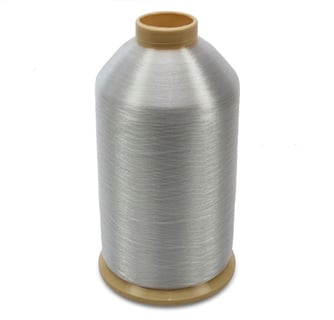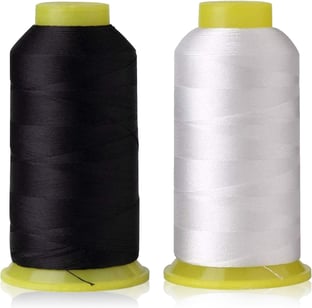Thread Matters: A Thread Selection and Usage Guide
Unravel the art of perfect stitches with our latest blog post: 'Thread Matters - A Thread Selection and Usage Guide.' Explore the world of threads and discover the key to seamless sewing. Elevate your craft with informed choices!
SEWING ESSENTIALS UNVEILED
Joshua Scarsellone
12/15/20232 min read


When it comes to sewing, the choice of thread can greatly impact the quality and durability of your projects. From the material of the thread to its weight, understanding the different aspects of thread selection and usage is crucial for achieving precise and long-lasting stitches. In this guide, we will navigate the world of sewing threads, providing you with the knowledge you need to make informed decisions for your sewing projects.
Thread Materials
Threads can be made from various materials, each with its own unique characteristics. The most common thread materials include:
Cotton: Known for its strength and versatility, cotton thread is suitable for a wide range of sewing projects. It is especially ideal for natural fabrics.
Polyester: Polyester thread offers excellent durability and resistance to stretching. It is often used for sewing synthetic fabrics and garments that require frequent washing.
Nylon: Nylon thread is known for its high strength and elasticity. It is commonly used for sewing heavy-duty fabrics, such as canvas and upholstery.
Silk: Silk thread is known for its smoothness and lustrous appearance. It is commonly used for delicate fabrics and high-end garments.
Cotton thread
Polyester
Bonded Nylon
Thread Weights
Thread weight refers to the thickness or fineness of the thread. The weight of the thread is denoted by a number, with a higher number indicating a finer thread. The choice of thread weight depends on the fabric and the desired outcome of your project.
For lightweight fabrics, such as chiffon or silk, a finer thread with a lower weight, such as 60 or 80, is recommended. Medium-weight fabrics, like cotton or linen, can be sewn with a thread weight of 40 or 50. For heavier fabrics, such as denim or upholstery, a thicker thread with a higher weight, such as 30 or 40, is suitable.
Thread Usage
Aside from considering the material and weight of the thread, it is important to use the appropriate thread for different sewing techniques. Here are some common thread usage tips:
General sewing: For everyday sewing projects, a medium-weight, all-purpose thread is usually sufficient.
Topstitching: When you want your stitches to be visible and decorative, consider using a heavier thread or a contrasting color.
Quilting: Quilting requires a strong and durable thread. Cotton or polyester threads with a higher weight are commonly used for quilting projects.
Embroidery: Embroidery threads are specifically designed for intricate stitching and embellishments. They come in a variety of materials, such as cotton, rayon, and metallic.
Conclusion
Choosing the right thread for your sewing projects is essential for achieving professional-looking results. By considering the material, weight, and usage of the thread, you can ensure that your stitches are precise and durable. Experiment with different threads to find the ones that work best for your specific projects, and don't be afraid to explore new possibilities. Happy sewing!





